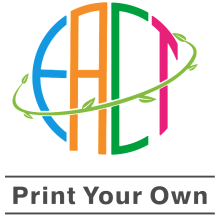It is impossible to imagine modern polygraphy without digital printing. Due to this technological innovation, people can complete complex projects much faster. With the help of operational printing, it has become possible to print documents directly from the computer without additional prepress processes.
Thus, it saves considerable time for the production of printed products. Another advantage of digital printing consists in the fact that it is an easy-to-use technology. Digital printing exists for about 70 years and nowadays, it is perhaps the most popular modern printing method.

Digital printing had its beginning in the late 30s of the XX century. The author Michael Bhaskar states that “digital networks and the possibility of digital publishing have long roots and architectures translating into a specific set of questions for publishers” (p. 56). October 22, 1938, Chester Carlson received the first electro-photographic imprint (Bhaskar, 2013). In 1948, this invention was called xerography and Haloid released the first commercial Xerox Model A Copy Machine. It was the first technology that let everyone duplicate things.
Nevertheless, digital printing machines became popular only over some time, since they continued to have various drawbacks. A major drawback from the perspective of potential buyers was the low speed of digital printing machines. They were not able to achieve a performance of conventional machines (Cui, 2016). However, such disadvantage as low speed was compensated by undeniable advantages. They included the lack of prepress, reduced waste, lowered printing costs due to saved spare parts, elimination of errors and need for labor (Cui, 2016). These days, the market of proposed printing for digital printing is highly extensive.

Modern Digital Printing
Currently, digital printing technologies continue to develop actively. It is necessary to mention that there are several methods of digital printing. In the book Handbook of Digital Imaging, it is noted that “digital printing methods include dry electrophotography, liquid electrophotography, iconography, magnetography, continuous inject, drop on demand inject, direct thermal, thermal transfer, dye diffusion thermal transfer, digital silver halide, impact printing, and laser ablation”. Therefore, people can choose the necessary technology from the proposed diversity. According to the forecasts of analysts, trends in the development of these technologies suggest that in addition to traditional applications, such as small print runs, personalized products, and variable data printing, digital printing will conquer new markets by starting to print books, labels, packaging, catalogs, brochures, and other products. In many respects, it is explained by the fact that the print runs of printed products are constantly decreasing. At the same time, the quality of digital printing is constantly improving and nowadays, it is practically indistinguishable from the quality of offset printing.
Now, digital printing is experiencing a real boom. Even large offset printing houses purchase digital for small and medium runs. Besides, the share of small print runs is constantly increasing. In addition, many commercial printers tend to open their mini printing houses due to the spectrum of digital. The market of printing machines offers a huge selection of digital developments from standard duplicators with semi-professional finishing to a full-featured printing house with post-processing lines, modern high-performance offset machines, and prepress (Kriss, 2015). The market of digital printing continues to develop and grow rapidly.


Eden Zhou
www.customprintingfabric.com

 USD
USD



